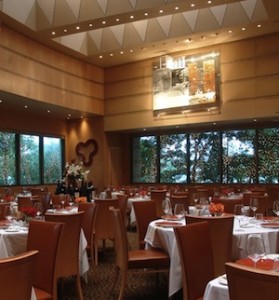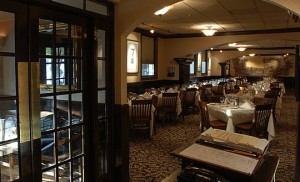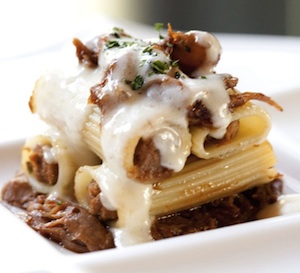At a high school reunion not too long-ago, a classmate’s wife – originally from Manhattan – remarked about the lack of affordable, first-rate Italian restaurants in Houston, at least compared to New York.
It’s true. No city can approach the Big Apple in this regard. It’s largely a matter of numbers. While New York might have an estimated 2,500 Italian-themed restaurants, there are roughly 300 in the Houston area. But, even for the former New Yorker – and maybe also for the native Italian – there are a number of worthwhile Italian restaurants in Houston.
Really.
Viva Italia
The development of Houston’s Italian restaurant scene is generally representative of what was happening across the country, if in much more dramatic terms. Following the success of D’Amico’s – the first upscale Italian restaurant in the city when it opened in the late 1970s – one of its partners, Damian Mandola, opened Damian’s in 1985. It served familiar robust, well-executed Italian-American cooking, but with a broader array of preparations and influences, and in even more expensive fashion. It was soon to be acclaimed as one of the best restaurants in the state by Texas Monthly.
Just a year after that success, the garrulous Mandola paired with his nephew, Johnny Carrabba, to open Carrabba’s. Bold and often piquant flavors, generous portions, moderate prices, noticeably well-trained and proficient service, a bustling open kitchen, and an inviting and boisterous atmosphere were ingredients for success.

Tony's San Remo room illustrates how far Italian cuisine in Houston has come from a candle-in-a-chianti-bottle cliche.
Perfectly attuned to Houston tastes, Carrabba’s was an immediate sensation. It was the almost ideal Italian-American trattoria; and in fact its outline was turned into a coast-to-coast chain, while the two original spots owned by founder Carrabba remain amazingly popular with locals.
Beginning in the early 1980s, the state’s most famous restaurateur, Tony Vallone, showcased rich Italian dishes at Anthony’s.It and its older sibling, Tony’s, were regarded as two of the city’s finest tables.
In 1989 Vallone opened Grotto, paying homage to his family’s roots near Naples. It was truly original, and drew some national attention. The food was excellent; not authentic, but the execution and ingredients were top-notch. The flavors were properly distinct and vibrant, Italian rather than typically Italian-American. Luscious veal scallops crusted in Parmesan, crab claws in a complementary, spicy marinara sauce, and the introduction of the bellini to the city were just a few of its draws.
Room for Rusticity
Throughout the 90s, the Italian options continued to grow more interesting. Arcodoro, featuring the unique cuisine of Sardinia, opened in 1996, attracting a fashionable crowd from the start. Dishes like Sa Rosu kin Arellas, a subtle saffron-tinted broth filled with tiny clams and rice, and Maccarrones de Puntzu, semolina dumplings in a hearty lamb ragù, were introduced to locals. A few years later its polished rusticity was awarded with three stars out of four – and rated among the top two dozen in the country – by famed Italian journalist Luigi Veronelli and his team in The Best Italian Restaurants in America.
The year 2000 saw both the most ambitious Italian effort to-date, Da Marco, and the first true trattoria, divino.
Da Marco was the product of Marco Wiles, a veteran of local Italian kitchens. With his knowledge, talent and sense of purpose, he made Da Marco the most distinguished Italian restaurant in the city and state. It did a terrific job replicating northern and central Italian trattoria classics. Delectable freshly made pastas were a staple of most visits along with mains in the proper Italian-style like an excellent, savory rendition of fegato alla veneziana; thinly sliced liver and onions. In 2006 Gourmet rated Da Marco among the top fifty restaurants in the country, with only three other Italians placing higher. That same year, Wiles followed with Dolce Vita, featuring some of the very best pizzas in the city cooked in a blistering wood-fired oven. Before the end of the decade came Poscol, serving small plates of mostly northeastern Italian-inspired dishes.
Far Beyond Spaghetti
In the fall of 2009, renowned Piero Selvaggio – who in the 1980s helped originate the luxury Italian restaurant – opened the third branch of his high-flying Valentino in Houston. Its creative ethos and credibility were novel for the city. While often imaginative, the cooking is firmly rooted in Italian traditions, often in the spirit of the historic alta cucina of the wealthy. Peerless ingredients, inspiration from Selvaggio’s extensive repertoire, and the skilled execution of the experienced Cunninghame West combine to produce often remarkable food. (Try West’s Fried Caper Crepe in our Recipe file.) Despite the unlikely name, West is likely the top Italian chef working in the state. Breast of smoked Texas quail paired with bitter arugula – a smart take on a popular local game and flavor – a remarkably succulent bison filet sauced with vincotto, and perfectly cooked risotto with woodsy, impeccably fresh domestic porcini that would draw raves in Piedmont have been a sample of the kitchen’s capacity.
Despite his unlikely name, Cunninghame West is likely the top Italian chef working in the state.
The most notable and interesting restaurants have exhibited a greater level of adherence to Italian models. This is due partly because those that aimed for more authenticity also devoted more attention to the quality of the ingredients and their use. What most diners primarily care about is quality, regardless of provenance.
When in Houston
For the most part, Houston’s restaurants have long served a similar array of dishes that are found around the country, but there are certainly more than a few worthwhile preparations that exhibit regional flair. Many were developed over the years by marrying the southern Italian and Italian-American pasta-with-a-sauce tradition to local products that customers enjoyed. Shrimp and blue crab from the nearby Gulf are the two most popular area items that have mingled well with long strands of pasta. These two in a home-style spaghetti sauce has been a favorite for years at Tony Mandola’s, and one of the most emblematic of the local expressions.
Today, the best of the Houston Italian restaurants consists of both natively bred Italian-Americans fully in-step with demanding local palates, and others with chefs and restaurateurs familiar with Italy who hem more closely to what is served there. Very many more are quite enjoyable, too…as Italian restaurants should be.



Want Italian? Go to Houston. Yes, Houston. http://tinyurl.com/3f8ebjj